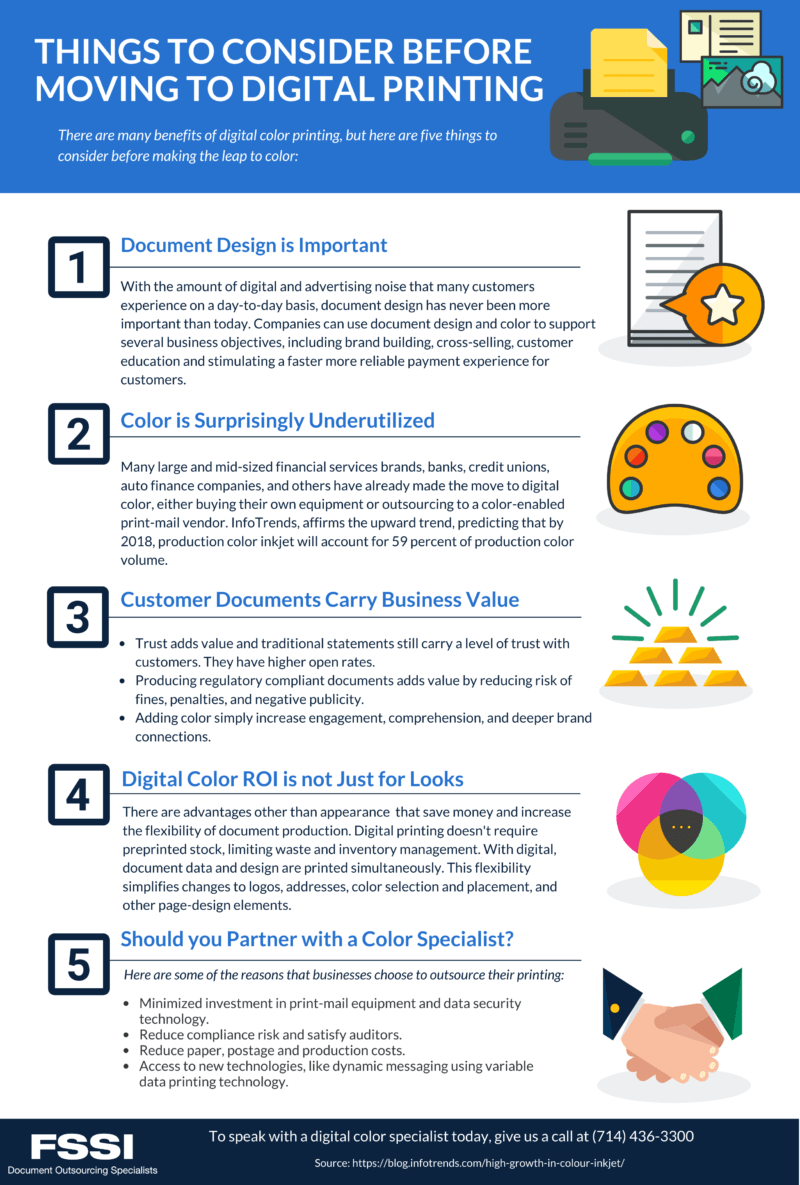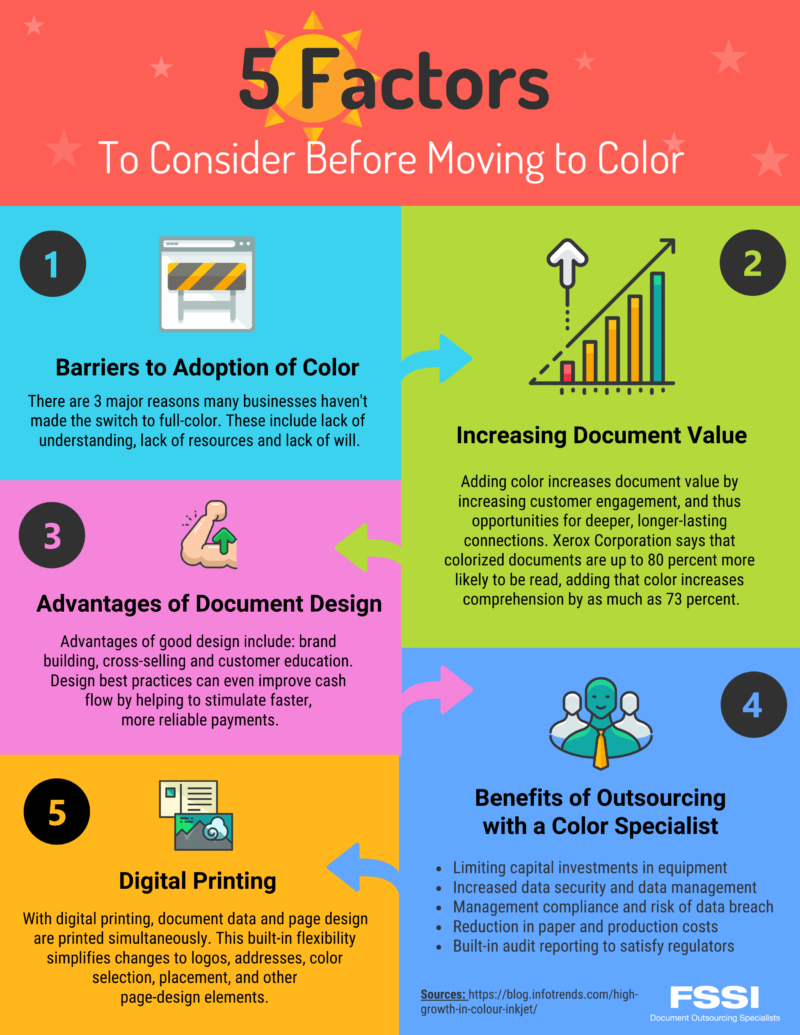10 Easy Facts About Digital Printing Shown
10 Easy Facts About Digital Printing Shown
Blog Article
The Of Digital Printing
Table of ContentsGetting My Digital Printing To WorkDigital Printing for BeginnersThe Ultimate Guide To Digital PrintingWhat Does Digital Printing Do?Digital Printing for Beginners3 Easy Facts About Digital Printing Described
Variable data printing, such as straight mail with customized codes and addresses, is preferably suited for electronic printing. Digital quick printing just requires four actions of design, testimonial, printing and binding to get every little thing done. Digital quick printing has an unrivaled advantage: print on need.According to PMMI, digital printing permits brand names and manufacturers to react promptly to customer needs while improving the supply chain, minimizing warehousing price and waste, and appreciating faster time to market. That all sounds excellent, but exactly how does this modern technology do all that? The significant differentiator of these technologies is that there are no set up costs and no plates with digital printing.
Everything about Digital Printing
According to Wikipedia, the biggest difference between electronic printing and standard techniques such as lithography, flexography, gravure, or letterpress - Digital Printing is that there is no need to change printing plates in digital printing, whereas in these analog printing methods the plates are consistently replaced. This causes quicker turn-around time and reduces cost when making use of electronic printing.
Rapid manufacturing implies getting your item to market quicker. It likewise means it's easier and faster to make adjustments later, when you transform a recipe, include a SKU, or produce seasonal packaging. Digital printing is very adaptable, so it's simple to make changes to the package layout swiftly. All of it returns to the plates.
Extra stock can suggest even more waste later on. With conventional printing approaches, short-run printing is simply not feasible. Because a terrific design can make or damage your item, digital printing continually develops high-grade, clear and vivid graphics each time. Digital printing on versatile pouches includes the intense, dynamic, and precise graphics that almost bid consumers to reach out and touch them.
Digital printing is the process of printing digital-based photos directly onto a variety of media substratums. There is no demand for a printing plate, unlike with balanced out printing. Digital documents such as PDFs or desktop publishing documents can be sent directly to the electronic printing machine to print on paper, photo paper, canvas, material, synthetics, cardstock and various other substrates.
Some Ideas on Digital Printing You Need To Know
According to PMMI, digital printing enables brand names and manufacturers to respond promptly to client demands while boosting the supply chain, decreasing warehousing expense and waste, and delighting in faster time to market. That all audios excellent, yet exactly how does this modern technology do all that? The significant differentiator of these modern technologies is that there are no set up charges and no plates with digital printing.
This results in quicker turnaround time and reduces cost when making use of electronic printing.

Top Guidelines Of Digital Printing
With conventional printing techniques, short-run printing is simply not possible. Since a fantastic style can make or damage your product, digital explanation printing consistently produces high-quality, clear and vivid graphics each time.

According to PMMI, digital printing enables brands and suppliers to react rapidly to client demands while improving the supply chain, lowering warehousing price and waste, and enjoying faster time to market. That all sounds terrific, however just how does this modern technology do all that? The significant differentiator of these modern technologies is that there are no set up costs and no plates with electronic printing.
Some Known Incorrect Statements About Digital Printing
This results in quicker turn-around time and decreases price when using digital printing.
Speedy manufacturing indicates obtaining your product to market much faster. It likewise means it's much easier and faster to make adjustments in the future, when you i was reading this transform a recipe, include a SKU, or create seasonal packaging. Digital printing is very adaptable, so it's simple to make changes to the package design rapidly. It all returns to home plates.

Getting The Digital Printing To Work
Digital printing is the process of printing digital-based pictures directly onto a range of media substrates. There is no requirement for a printing plate, unlike with balanced out printing. Digital data such as PDFs or desktop computer posting data can be sent out straight to the digital printing press to print on paper, photo paper, canvas, fabric, synthetics, cardstock and various other substratums.
Report this page